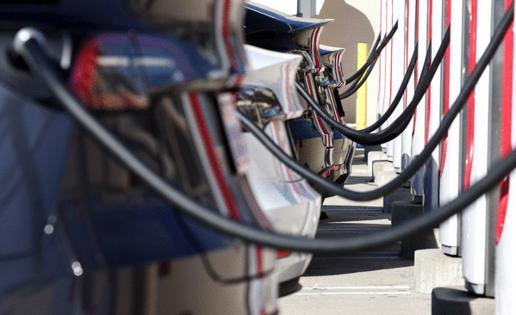Automakers get more time to ramp up EVs under final EPA emissions rules
Published in Automotive News
The U.S. Environmental Protection Agency said Wednesday its final automobile tailpipe emissions standards allow additional time for the automotive sector to scale up supply chains for electric vehicles and other alternative fuel powertrains in the latter half of the decade than it would have under a previous proposal.
The change partially shows the Biden administration bowing to requests by the automotive industry and the United Auto Workers, both of which represent a key voting demographic and called for moderation in regulations in light of slowing growth in EV sales. The rules, though, remain the "strongest-ever pollution standards for cars," according to an EPA news release.
Consumers remain hesitant to buy into all-electric vehicles because of high prices, limited charging infrastructure, charging speeds slower than filling a tank of gas and grid reliability concerns. Those circumstances have fueled criticism on the campaign trail of President Joe Biden from expected Republican nominee Donald Trump who has indicated he would seek to overturn the Biden rules if elected.
Trump has characterized the regulations as an EV "mandate" that will force Americans to buy vehicles they don't want and jeopardize jobs, while Biden has made subsidies in the clean-energy sector and slashed carbon dioxide emissions from gasoline-powered vehicles cornerstones in his environmental policy fighting climate change.
The final rules don't require customers to buy an EV, but are a performance standard that leaves it up to automakers to determine their sales mix of powertrains to comply with the greenhouse gas emissions limits for light-duty vehicle fleets of model years 2027 to 2032 and beyond.
The biggest differences from the preferred proposal last April by the EPA are in the first three years. For model year 2029, the total light-duty fleet standard is 136 grams of carbon dioxide per mile compared to 111 grams per mile under the original proposal.
For model year 2032, the final fleetwide light-duty rule places the limit at 85 grams of carbon dioxide per mile. That's compared to 82 under the original proposal, which to achieve at the lowest cost, the EPA at the time had forecasted would mean a 67% EV U.S. sales rate.
Under the final rules, the EPA says it expects the mix of EVs with plug-in hybrids, hybrid electric vehicles and cleaner international combustion engine vehicles to increase. It projects that from model years 2030 to 2032 at reasonable costs, manufacturers may choose to produce all-electric vehicles for about 30% to 56% of new light-duty vehicle sales with some of those other options, as well.
That's more in-line with industry projections, but a potential pullback from Biden's aspirations for half of new-car sales to be zero-emission by 2030.
The president in a statement said that's not the case: "We’ll meet my goal for 2030 and race forward in the years ahead."
...continued
©2024 www.detroitnews.com. Visit at detroitnews.com. Distributed by Tribune Content Agency, LLC.







Comments